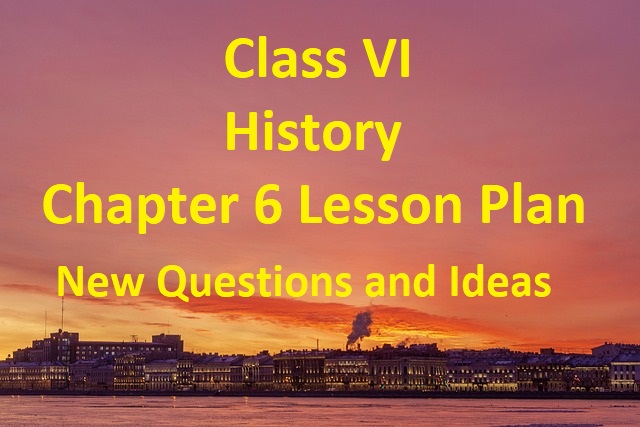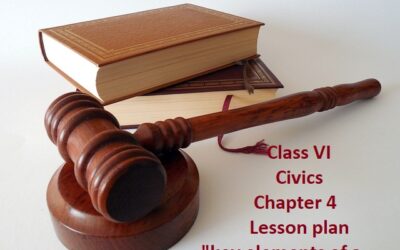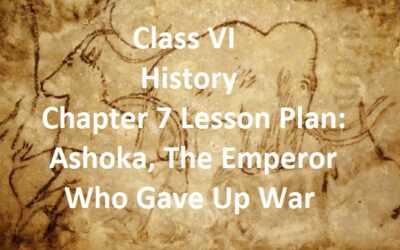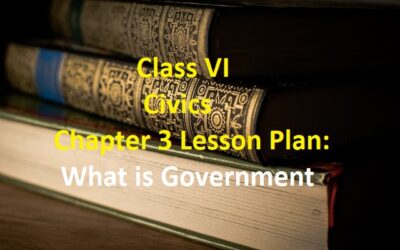New Questions and Ideas Class VI History Chapter 6 Lesson Plan
Class VI History Chapter 6 Lesson plan is an activity that a teacher has to perform before the actual teaching takes place. It is the road map for any teacher. Moreover, effective lesson planning provides the students with the necessary structure and direction. It also takes care of the diverse needs of our students. This Chapter 6 Lesson plan provides better resources that are integral to students. This lesson plan is full of classroom activities that children will enjoy doing. It will also allow teachers to critically reflect on and improve our teaching and learning practice. It ensures every minute of class time in teaching new concepts. Class VI History Chapter 6 lesson plan will help you to reach every child with a clear plan in mind.
New Questions and Ideas Class VI History Chapter 6 Lesson Plan
General Objective:
Firstly, to develop students’ interest in the subject.
Secondly, to understand society and its place within it.
Thirdly, developing scientific temperament among the students.
Fourthly, to develop skills of inquiry, investigation, and analysis.
Finally, to enhance students’ learning ability.
Specific Objective:
- Students will know the story of the Buddha and Kisagautami.
- They will also learn about the teachings of Buddha.
Checking Previous Knowledge:
At first, the teacher checks the previous knowledge of the students by asking a few questions.
Have you heard about Panini? Do you know about Gautam Buddha and Mahavir Jain.
Introducing Topic: storytelling method
At first, the teacher narrates the story of Gautam Buddha and Mahavir Jain.
Teaching aids: Class VI History Chapter 6 Lesson plan
Text Book, Black Board, Youtube videos, Images, and PPT
Technique:
To begin with, the teacher starts the Interactive session with common examples.
However, the teacher uses various methods to make the topic interesting by interacting with the children in the class.
By asking very simple questions, the teacher draws the attention of the class.
Also, make sure that the children are involved in the discussion.
Finally, While interacting with the students, the teacher also tells about the teachings of Buddhism and Jainism.
Content/ Teaching Points:
- The story of the Buddha.
- The story of Kisagautami.
- Upnishads.
- Jainism
- Sangha, Monastries and the system of ashramas.
First Activity: Class VI History Chapter 6 Lesson plan
Open Book Assessment
The teacher conducts an open-book test.
To begin with, she Prepares 10 short questions (worksheet) from the chapter.
However, Students are asked to find out the answers from the textbook and write in their copy.
Time: 30 minutes.
Second Activity:
Description:
Firstly, the teacher divides the class into four groups.
Thereafter, each group is given a topic from the chapter, such as
i) teachings of Buddha
ii) Teachings of Mahavir.
iii) Sangh & Monastries
iv) Life in the ashramas.
Group members have to read the topic from the book and provide information based on the given topic.
They will be given 20 minutes time to collect information and 3 minutes time to present.
Finally, their observations will be displayed on the class board for two days.
Learning Objective:
By the end of the activity, students will be able to:
- describe the architecture of the House, streets, and drainage.
- explain Life in the city,
- provide detailed information about Art and crafts, and
- mark the Harrapan towns in Gujarat on the map of India.
Assessment Criteria:
Indicators
- Relevance of Content
- Presentation of information gathered
- Awareness of the information gathered
- Creativeness
- Analytical Skills
Class work: Class VI History Chapter 6 Lesson plan
i) Firstly, Objective and short answer type questions will be done.
ii) Finally, Long answer type questions will be discussed and done in the class.
Homework:
Draw the design of buildings, streets, and drains of the Harappan period and compare it with today’s town planning.
Values imparted:
Firstly, the Social responsibility for proper drainage and management of water.
Secondly, Sensitization towards the advantage of a planned town.
Multidisciplinary Integrated learning:
- Art: Draw a scene of Harappan town showing streets and drainage system.
- English: T.V. reporting from Lothal. (imagine you are in Lothal)
- Math: what is the advantage of streets and drains at 90 degrees?
Assessment Criteria:
Indicators
- Relevance of Content
- Presentation of information gathered
- Awareness of the information gathered
- Creativeness
- Analytical Skills
Learning Outcome:
After the completion of this chapter, students will be able to
- Firstly, explain the teachings of Gautam Buddha.
- Secondly, discuss Upanishads.
- Thirdly, sketch out the similarities and differences between Bhuddhism and Jainism.
- Finally, find facts about Sangha, Monastries and Life in Ashramas.
Remedial Measure:
Each One Teach One
Children sitting on the left side of the row will explain the chapter to the children sitting on their right.
Conclusion: Class VI History Chapter 6 Lesson plan
I hope this Lesson plan will be of great help to the new teachers.
Did you enjoy conducting activities given in the Class.
At last, I request you to comment and subscribe.
So that, you get the notification of the next lesson plan.
Class VI History Chapter 3 Lesson Plan – In the Earliest Cities
Class VI Civics Chapter 3 Lesson Plan: What is Government
Was this lesson plan helpful to you? Write your views in the comment box.





They are very nicely planned and helpful to teachers in planning their teaching .
Thank you Meeta for your encouraging words and support. Keep visiting shapingminds.in
Please send grade 6 Chapter -5 History lesson plan .
SURE. WE ARE WORKONG ON IT. VERY SOON YOU WILL FIND ON MY WEBSITE.
Class VI History Chapter 5 Kings, Kingdoms and an Early Republic Lesson Plan is now available on shapingminds.in
Thank you Meeta for your wonderful remarks and encouraging words.
Thank you for sharing .. they are really very helpful.
Thank you Bindu for your encouraging words,
Great lesson plan ; activities kept simple and precise. Very helpful .Thanks a lot.
THANKOU FOR YOUR WONDERFUL AND ENCOURAGING COMMENT.
Need chapter 5 panchayati raj lesson plan
SURE, VERY SOON YOU WILL FIND ON MY WEBSITE. WE ARE WORKONG ON IT.
Class VI History Chapter 5 Kings, Kingdoms and an Early Republic Lesson Plan is now available on shapingminds.in
Good evening sir
Kindly send class 6 Geography ch: Major Domains of the earth lesson plan
It’s very useful for us
Thank you
Now Chapter 5 Panchayati Raj lesson plan is available on website shapingminds.in